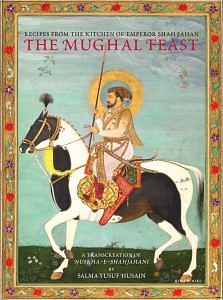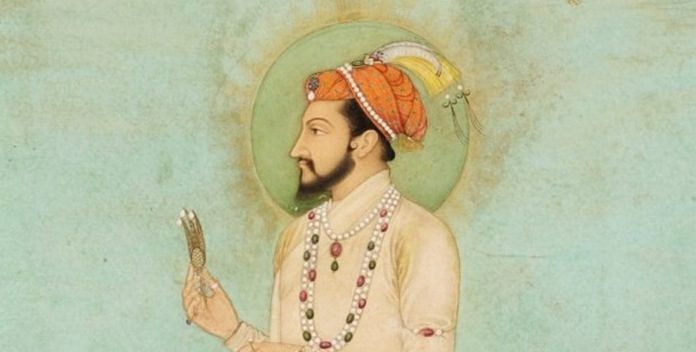The silver twilight of Mughal civilization began with Shah Jahan. Delhi was now a sanctuary of an urbane, sophisticated court which had taste, even elegance. By early 1730 the city had absorbed various elements from neighbouring regions and witnessed a mingling of international as well as national strains and an interchange of ideas, customs and food.
The Portuguese relationship with the Mughals had already been established a long time back, along the trade routes. Hence the imperial kitchens, besides Indian ingredients, saw an additional ingredient brought by the Portuguese – the chilli. The chilli was very similar to the long pepper, already in use, and therefore did not look too unfamiliar to royal chefs, but had the hot taste.
Other vegetables like potatoes and tomatoes also appeared on the scene and the food of the Red Fort became rich in colour, hot in taste, and varied as compared to the bland food of its ancestors. Qormas and qaliyas, pulaos and kababs, and vegetables in different garb, besides European cakes and puddings, adorned the table. Cooking and serving food in the royal kitchens was a riot of colours, fragrances, experiments, table manners and protocols.
The emperors usually ate with their queens and concubines, except on festive occasions, when they dined with nobles and courtiers. Daily meals were usually served by eunuchs, but an elaborate chain of command accompanied the food to the table. The hakim (royal physician) planned the menu, making sure to include medicinally beneficial ingredients.
For instance, each grain of rice for the pulao was coated with silver warq, which aided digestion and acted as an aphrodisiac. One account records a Mughal banquet given by Asaf Khan, the emperor’s wazir, during Jahangir’s time to Shah Jahan – though no outsider had ever seen any emperor while dining except once when Friar Sebastian Manriquea, a Portuguese priest, was smuggled by an eunuch inside the harem to watch Shah Jahan eat his food with Asaf Khan.
Once the menu was decided, an elaborate kitchen staff – numbering at least a few hundred – swung into action. Since a large number of dishes were served at each meal, an assembly line of staff undertook the chopping and cleaning, the washing and grinding. Food was cooked in rainwater mixed with water brought in from the Ganges for the best possible taste.
Not only the cooking but the way the food was served is interesting to note – food was served in dishes made of gold and silver studded with precious stones, and of jade, as it detected poison. The food was eaten on the floor; sheets of leather covered with white calico protected the expensive carpets. This was called dastarkhwan.
It was customary for the emperor to set aside a portion of food for the poor before eating. The emperor began and ended his meal with prayers; the banquet ran for hours as Shah Jahan liked to enjoy his food, spending long hours at dastarkhwan. With the passage of time, indigenization in the cooking style became obvious and certain Indian ingredients, like Kashmiri vadi, sandalwood powder, suhaga, betel leaves, white gourd, and batasha, and fruits like mango, phalsa, banana, etc., were used to give different flavours to dishes. Like his ancestors, Shah Jahan also enjoyed fresh fruits.
The Mughals gave India a variety of fruits like cherries, apricots, grapes and melons, but their love for mangoes was unbeatable. Shah Jahan liked to weigh fruits in front of him and once became angry when one of his sons instead of sending mangoes from his favourite tree in Deccan had eaten all. Shah Jahan’s love for mangoes made the imperial kitchens prepare imaginative recipes of qaliya and pulao to please the emperor.
Though the cooking of pulao finds its mention in early Tamil literature of the 3rd and 6th centuries, its refinement was brought by the Mughals, for whom the cooking of rice was indeed an art. It required a certain finesse to cook it to perfection. In the hands of the culinary masters of the royal kitchens, cooking became yet another medium of expression and pulaos became a sophisticated dish of royal cuisine. A variety of exotic pulaos, like moti pulao, narangi pulao, mutanjan pulao and muresseh pulao were created and presented on the royal dastarkhwan to suit the royal palate.
Unfortunately, the last years of this great emperor were unhappy. Deposed by his son Aurangzeb, Shah Jahan was imprisoned in Agra Fort and remained there for eight years until his death in 1666. Legend has it that Aurangzeb ordered that his father be allowed only one ingredient of his choice, and Shah Jahan chose chickpeas. He chose them because they can be cooked in many different ways. Even today, one of the signature dishes of North Indian cuisine is Shahjahani dal, chickpeas cooked in a rich gravy of cream.
AMBA PULAO
Sweet and tangy mango lamb rice
Serves: 6-8
Ingredients
Lamb, cut into pieces 1 kg
Rice 4 cups / 1 kg
Ghee 1 cup / 250 gm
Onions, sliced 1 cup / 250 gm
Ginger (adrak), chopped 4 tsp / 20 gm
Coriander (dhaniya) seeds, crushed 4 tsp / 20 gm
Salt 4 tsp / 20 gm
Cloves (laung) 1 tsp / 5 gm
Raw mangoes (kairi) 1 kg
Sugar 3 cups / 750 gm
Cumin (jeera) seeds 2 gm
Black peppercorns (sabut kali mirch) 1 tsp / 5 gm
Cinnamon (dalchini), 2 sticks 1˝ each
Pistachios (pista), fried ½ cup / 125 gm
Almonds (badam), fried ½ cup / 125 gm
Raisins (kishmish), fried ½ cup / 125 gm
Method
- Make yakhni with the lamb pieces, ghee, onions, ginger, crushed coriander seeds and salt. Strain the stock and separate the lamb pieces.
- Add half the mangoes to the stock, and cook until tender. Remove from heat and keep aside to cool. Squeeze the mangoes with hands to extract thick pulp. Strain and keep the mango stock aside.
- Make a sugar syrup of one-string consistency.
- Cut the remaining mangoes into pieces, boil in water and then float in this sugar syrup and cook until tender. Remove from the syrup and keep aside.
- Add the syrup to the mango stock and parboil the rice in it.
- In a separate pan, spread the cumin seeds, followed by the lamb pieces. Add the whole spices and 2 tbsp sweet stock; cook on low heat until syrup is absorbed.
- Spread the rice over the lamb, pour some ghee and cook on dum.
- While serving, arrange the mango pieces on the pulao and garnish with fried dry fruits.
 This excerpt from Salma Yusuf Husain’s The Mughal Feast: Recipes from the Kitchen of Emperor Shah Jahan has been republished with permission from Roli Books.
This excerpt from Salma Yusuf Husain’s The Mughal Feast: Recipes from the Kitchen of Emperor Shah Jahan has been republished with permission from Roli Books.




Mughals forced conversion, destroyed temples. An example is the Somnath temple which was looted 18 times by Muslim invaders. They killed millions. Don’t get me wrong I hate no Muslim; they did not have control over the crimes of their ancestors. most of them were victims of Mughal forced conversions. But I cannot say the same for the people that admire the Mughals.
The introduction of pulao is no excuse for mass genocide.
If only the Portuguese had seen the “Emperor” in royal defacation then the story would have been complete.
By the way the central Asian region from where the Mughals came had no rice, no spice and no silver.
So please stop trying to give a picture that Mal-e-Ghanimat plunderers were royals.
Great comment, slap on these Islamic Jihadi apologists.
Nice one
The headline is misleading. The copy talks in a very generic way on the emperor’s food. The headline suggests a narration of one particular instance.